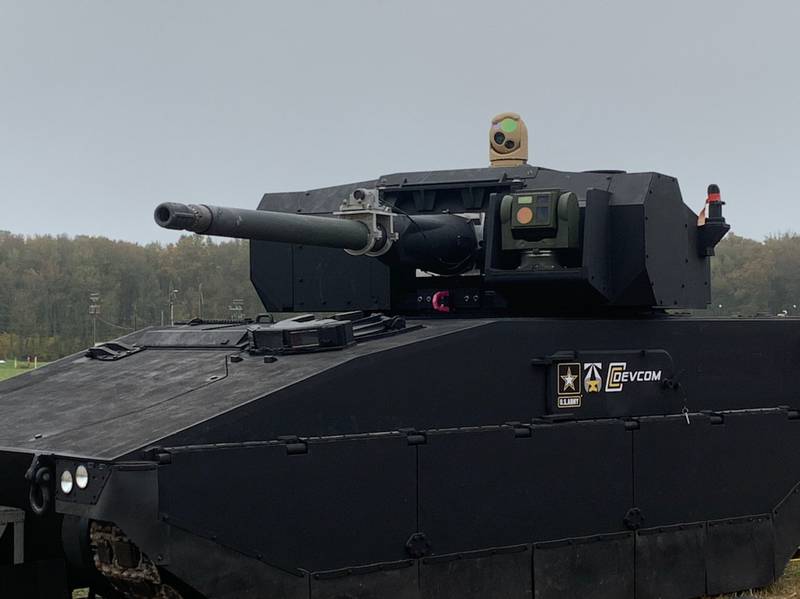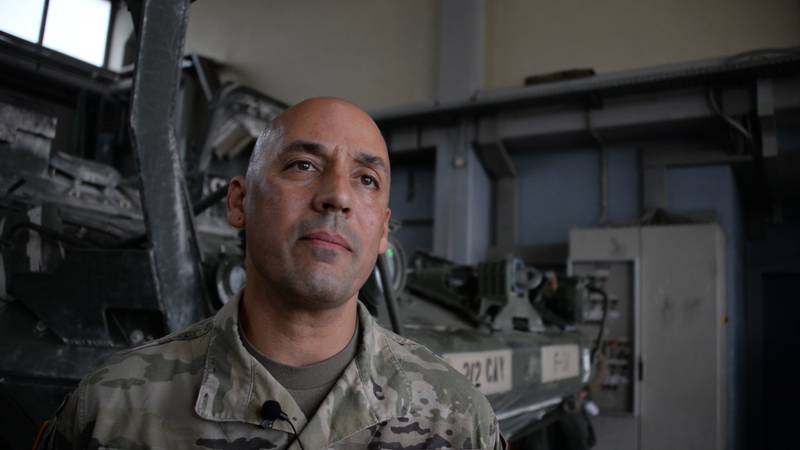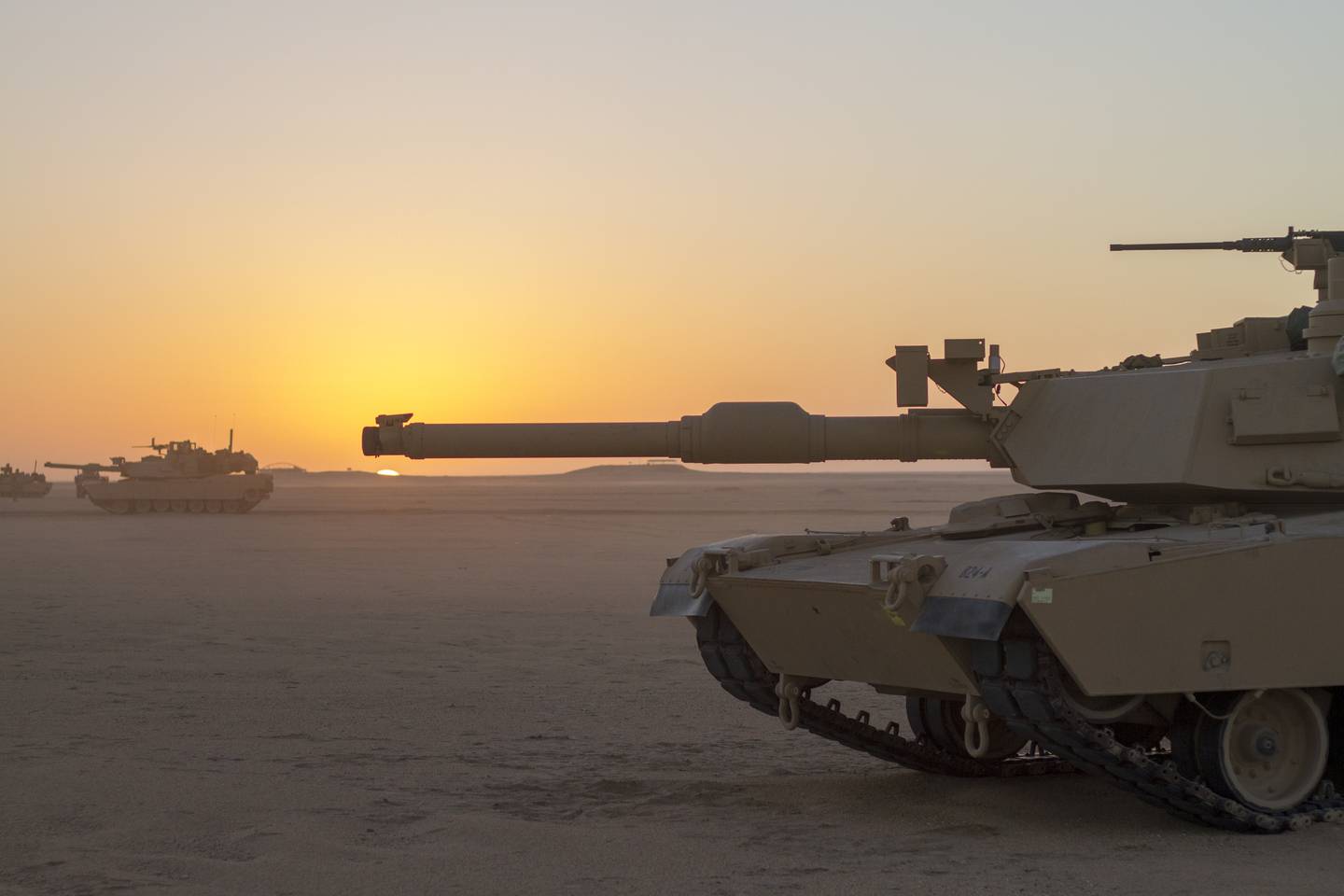WASHINGTON — It’s not easy to upgrade tanks.
They’re more than guns on treads. They rely on a series of networked capabilities: GPS receivers that tell operators where they are, radios to communicate with others, and sensors to detect and identify potential threats.
Effectively, each of those capabilities or any upgrade requires a custom installation to ensure the system — and all of its enabling technologies — fits and works with the other computerized equipment on the tank.
But the Army C5ISR Center expects its open standards project to transform upgrades and save significant money over platforms’ lifetimes. The C4ISR/EW Modular Open Suite of Standards approach — or CMOSS — would make replacing or updating capabilities as simple as plugging in a new VPX card — a rugged, standard chip about 1-inch big that’s used for defense applications.
Custom installations would mostly disappear, and the tiny cards would shoulder the bulk of the work to reach the Army’s ultimate goal: an armored vehicle fleet that’s easy to update with the latest competitive technology.
“Due to the modularity, CMOSS enables cost savings through greater competition during the acquisition phase, but there’s also potential for significant cost savings over the entire life cycle, including sustainment,†Jason Dirner, C5ISR Center Intel Technology and Architecture Branch team leader, told C4ISRNET in an interview.
Recall how video game systems like the Nintendo 64 or Sega Genesis used to operate. A single console provided the graphics card, processing, power source, standard ports and common outputs to connect to a display. To play, people inserted a cartridge into the game port. That card contained all the game information, but developers designed it to use the console’s resources.
CMOSS applies that basic approach to the Army’s various platforms.
This plug-and-play method is a key piece of the rapid technology adoption the Army wants to keep its edge with near-peer competitors. Today, it’s no longer feasible to field a capability that will exist unchallenged for two or three decades. Other militaries are looking to exploit weaknesses in American systems for communications and position, navigation and timing, for example.
RELATED

When the Army buys technologies now, it purchases enough spares to last 30-plus years, explained Dirner. When hardware starts to fail after 5-10 years, the Army replaces it with a spare to maintain the capability. CMOSS makes it easier to develop and integrate upgraded capabilities.
When the original hardware begins to fail, the Army can install a new, better capability by plugging in a new chip. This reduces the amount of spares the Army needs to buy upfront and prevents the service from having to rely on the same tech for decades at a time.
In its current iteration, CMOSS exists as a common chassis on the exterior of the vehicle. The box has a number of slots for different capability cards while establishing shared antennas, processing, power, and position, navigation and timing data. CMOSS would drastically reduce the amount of unneeded redundancy on Army platforms, where each capability often has its own stovepiped collection of supporting technologies.
“On platforms today it’s not uncommon to have a number of unusefully redundant GPS receivers, just because each radio — whether it’s comms, EW [electronic warfare] — has their own embedded GPS capability. So just by sharing that capability, we open the door for SWaP [size, weight and power] savings,†Dirner said.
“Traditionally, we would have a stovepiped solution that … would have to be adapted and installed on each vehicle with some sort of custom kit,†said Ben Peddicord, C5ISR Center Intel Technology and Architecture Branch chief. “Something as simple as an Intel-based computer — the basic Intel processor was being custom packaged for each individual product that was installed on our platform. So the same basic processor might be packaged three or four different ways on each platform, and all that customization added cost and, maybe more critically, time to the schedule.â€
The initial goal? To cut SWaP
Dirner and Peddicord have been involved with the CMOSS project since its inception around 2013 to try to reduce the size, weight and power footprint of C5ISR equipment.
“In the past, systems were integrated in a stovepipe manner. And so as a result, you had a lot of unnecessary, redundant equipment on the platform: antennas, processors, displays. And as a result you essentially had consumed all of the size, weight and power [SWaP] that was available,†Dirner.
CMOSS gives that ingrained process a drastic overhaul.
Visually, the most obvious aspect of CMOSS is the chassis, a nondescript box that can vary in size, depending on a tank’s needs. Inside that box are a number of ports where operators swap out VPX cards to provide capabilities. While some ports are designated for specific capabilities — such as PNT — others are open for general use.

“If you went to Best Buy and were to purchase a graphics card for your computer, they come in a standard size and shape, and actually the size and shape of a graphics card that you would buy is similar to the size of these individual cards,†Peddicord said.
Some capabilities may require multiple cards. “The architecture is scalable, so that if you can do it on a single card, great. If you need multiple cards in order to achieve the performance and provide the necessary processing, we provide the plumbing over the backplane [circuit board] to do that, to provide the physical connectivity,†said Dirner.
And if one box doesn’t have enough ports, the Army can add another.
“Bottom line is, you can have multiple chassis if you need them — different shapes and sizes — in the platform, and then you can synthetically build an application which leverages hardware from all of the chassis or also leverages hardware that may not be in the chassis,†said Peddicord. “There will always probably be some specialized pieces of hardware which aren’t suitable or don’t make sense to install in a VPX form factor.â€
The benefits of standardization
While less visible, one major advance of the program is establishing pooled resources for the various capabilities installed on the tank. For example, instead of attaching individual antennas for each system that needs one, CMOSS ensures that most — if not all — systems can use the same antenna. It does the same with power sources, processing, displays, and position, navigation and timing data. That drastically reduces the amount of SWaP thesesystems cumulatively require.
But the real innovation of the program may be establishing that open suite of standards for the various interfaces at the hardware, software and network layers. Vendors adopt those standards, ensuring that any new capability card will plug into the chassis and be interoperable with the various technologies on the platform, while pulling what it needs from other cards or pooled resources.
RELATED

Currently, even connections that can plug into each other may not be truly compatible, leading to confusion and possibly damage. CMOSS standardizes connections, reducing the likelihood that a user will plug a card into the wrong slot and damage the port.
“We surveyed the community — both government and industry — to identify which standards exist that satisfy the requirements, and then we adopted them wherever we could. If they weren’t a direct fit, we adapted them if needed. And then only as a last resort would we author our own specification,†Dirner said.
CMOSS may have started to address SWaP concerns, but it quickly became clear that the project will have major implications for rapid tech insertion.
“That drastically reduces the time to integrate these capabilities on our tactical platforms,†said Dirner.
Past stovepiped solutions required a significant installation process for individual antennas, processors, displays and more. Finding space for all that equipment was a challenge. With common standards, less customization is needed to add new technologies. The center is working to create a Universal A-Kit, a common tool set for upgrades or replacements.
Linking up beyond the Army
The C5ISR Center is also working to make sure it can integrate capabilities developed by other services. The center participates in the Sensor Open System Architecture Consortium, an organization established by the Air Force to tackle the same problems CMOSS is made to solve. The consortium helps government and industry develop open standards for the C5ISR community.
“If the Army, for example, has a gap and the Air Force or the Navy has a capability or system that can fill that gap, we want to be able to take that and be able to rapidly integrate that into our platforms rather than reinventing the wheel,†said Dirner.
While the Army is building CMOSS primarily as a chassis for ground vehicles, its standards and technologies can easily apply to a pod, aircraft or vessel. Again, the key innovation isn’t the chassis, but the adoption of open standards for plug-and-play capabilities. Dirner expects a variety of chassis — maybe one platform only needs three slots, while another could use 10 or more. The important aspect is that teams can quickly integrate chip capabilities with virtually any platforms using CMOSS.
The Army tested CMOSS at White Sands Missile Range in New Mexico last year, installing the chassis on a Stryker vehicle. The service was able to install an anti-jam antenna and plug in a new PNT card to test out that capability.
CMOSS is one of several projects included in Capability Set ’23, the Army’s effort to add new technologies and equipment to its tactical network every two years beginning in 2021.
Nathan Strout covers space, unmanned and intelligence systems for C4ISRNET.





